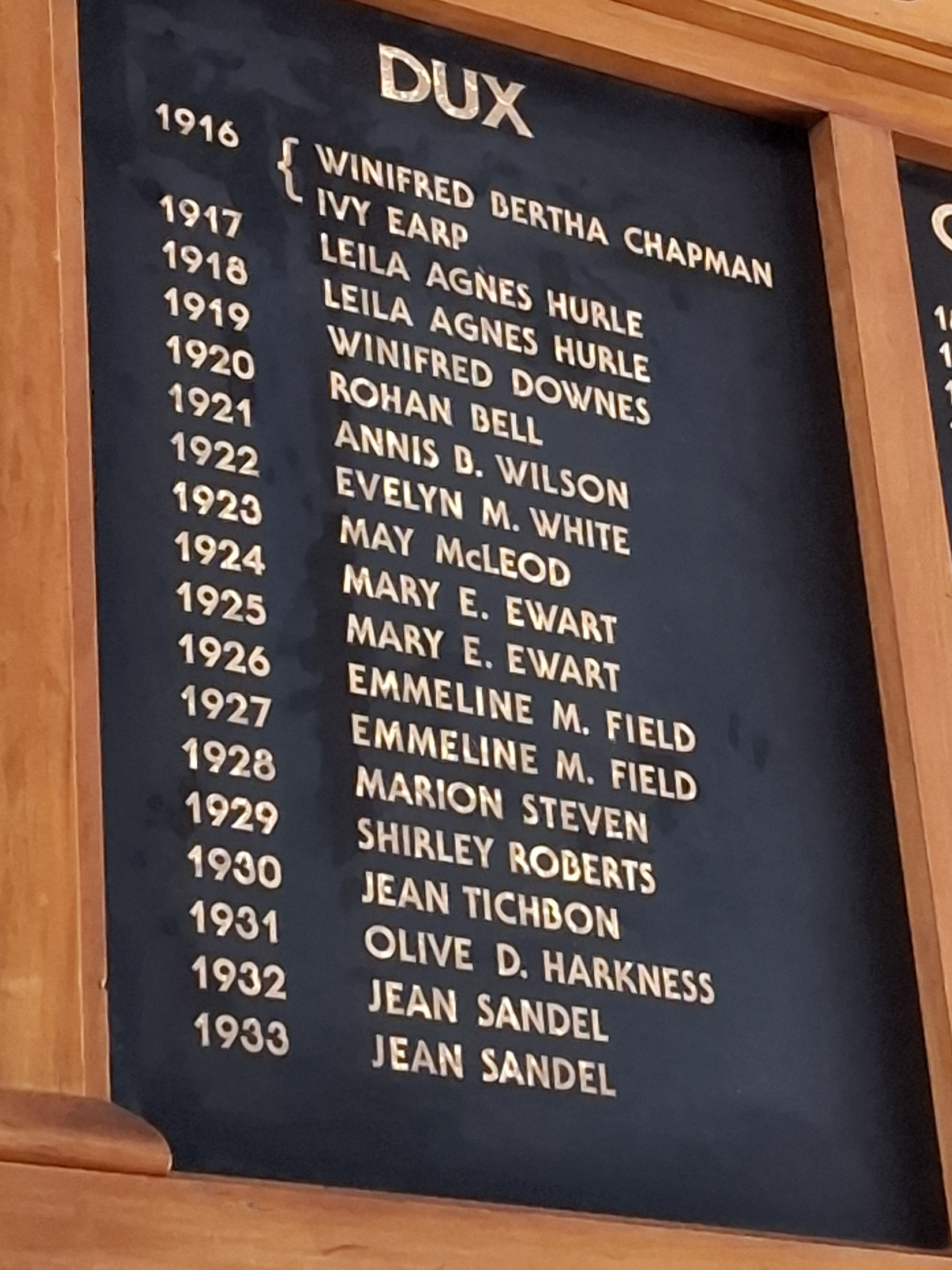Miss Catherine Grant, Miss Montgomery’s successor in 1897, was determined to establish a separate school for the girls and in 1913, before her departure to serve overseas in the war, New Plymouth Girls' High School became a separate institution. The 90-odd students were accommodated for their lessons in cramped conditions in a Devon St house and the first boarders were housed in another building, Quilliam House. Miss Hodges, who followed in 1914 endured further serious inconveniences occasioned by being obliged to shift temporarily into even less suitable accommodation. Finally however, towards the end of her two-year tenure as principal she was able to preside over the removal of students and equipment into the current premises in Mangorei Rd. Miss Rhoda Barr, who led the school from 1916 to 1920, by which time the roll had risen to 130, was able to install the boarders in new quarters, more comfortable and larger than Quilliam House, in Strandon House in Fitzroy, where they were able to enjoy more than hitherto a “home away from home”. The school, now in more spacious grounds, was able to offer a wider range of recreational pursuits and in 1917 the first sports day was held.
The four-year principalship of Miss McIntosh, from 1920-25 saw the school’s roll more than double again and soon both the school and the boarding house were bursting at the seams. The Old Girls’ Association began raising funds for what was to become the new boarding house. This became the pet project of Miss Doris Napier Allan, who became principal in 1926. “Scotlands”, the new hostel, built on land adjacent to the school and which became her pride and joy, was opened in February 1928. Miss Allan who was known to the girls as “Dinah” had an ambitious vision for the school and was both feared and respected. In her 18 years as principal, which spanned the Depression years, under her steadfast guidance the national and international academic reputation of the school became firmly entrenched.
The dux of the school and head boarder in 1932 and 1933 was Jean Sandel who became renowned as a surgeon, and is honoured and remembered on one of the carved pillars in the school’s Assembly Hall. Another eminent pupil, June Opie, who was a private boarder between 1939 and 1942 was to become a well-known author and broadcaster, familiar to contemporaries for her 1957 autobiographical work “Over My Dead Body”, which tells the story of her courageous battle with polio. 1943 In 1943 Annie Rose Allum was appointed principal. Thirty five years old, aristocratic, confident and elegant, she dominated and shaped the lives of a whole post-war generation of students.
The school continued to flourish academically and grew in stature in the fields of sport, music and the arts. The women who were successful products of what the school had to offer during that era emerged confident in their own ability, disciplined in their approach to life and well-prepared for careers in the world of higher education, the arts, the professions, business and other fields in which women had not formerly been significantly represented. Sadly, the greatest scholar of them all, Beatrice (Hill) Tinsley, only recently recognised for the scale of her achievements died in 1981 at the age of 40 at the peak of her career in astro-physics at Harvard. Her story is told in a fine biography “Bright Star”, written and published in 2006 by another distinguished former student, Christine Cole-Catley (Bull), the author of the school’s history prepared for the Centenary celebrations in 1985. 1968 By 1968 the social upheavals of the “Sixties” had begun to impinge on the life of the school. Recognition was growing that the school need to change and to widen its focus beyond the nurturing of the academic elite. In the course of the next six years the management of this painful transition fell to Jean Wilson. Tightening of standards in a number of areas, prudent financial management and broadening of the curriculum encountered some resistance but the changes instituted by Miss Wilson in these years laid the foundations for successfully confronting the greater challenges of the last quarter of the century.

